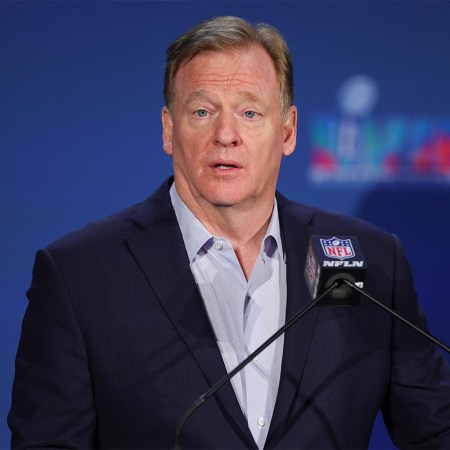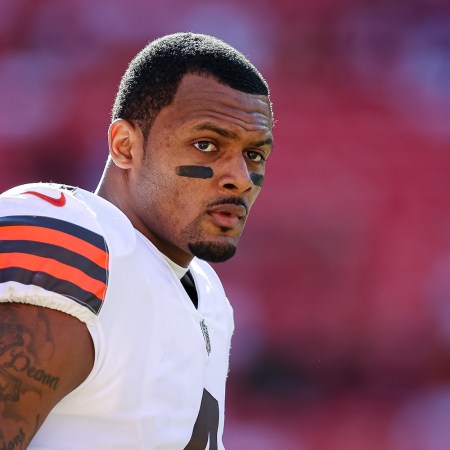The NFL could be very different by 2022: Tom Brady may have finally retired and there might be a franchise in London. That’s the loose target date for the NFL to become the first American sports league to cross an entire ocean. London is five hours ahead of New York—there is a brief window each year when daylight savings reduces this to four—and nearly 3,500 miles away. (Think the trip from L.A. to N.Y.C. plus another thousand.) London in your division would mean flying across the Atlantic once a year, every year. The Rams and the Chargers would particularly live in dread of getting the London game with its road trip of nearly 5,500 miles.
Yet not planting its flag in England could be even more harmful to the Shield. Of the five major sports leagues in the U.S.—NFL, NBA, MLB, NHL and MLS—it’s the only one not consistently attracting significant numbers of players (particularly stars) from outside North America.
This wouldn’t matter so much if the NFL weren’t also faced with a potentially significant shrinkage of its talent pool. There is a fair debate to be had about whether safer approaches to youth football can result in a sport where benefits outweigh the risks. Whatever the ultimate answer to that question, the fact is many parents are preventing their kids from playing football. Certainly the athlete who excels at baseball, basketball and football might have Mom and Dad conclude the NFL is likely to offer the briefest, most dangerous career. This isn’t to say other sports are free from horrific injuries—ask Gordon Hayward—but anyone who saw what a clean hit from Malcolm Jenkins did to Brandin Cooks in the Super Bowl might elect to keep all kids off the gridiron.
The 1983 NFL Draft featured six Hall of Famers in the first round alone: John Elway, Eric Dickerson, Bruce Matthews, Jim Kelly, Dan Marino and Darrell Green. Jump ahead to 2033. What happens if a generation of American kids don’t play Pop Warner and in turn don’t play in high school and college? Either the NFL’s looking at draft classes with a steep decline in quality… or they’ll have to import talent from other places.
This is a quick look at why the NFL is at a long-term disadvantage to America’s other team sports and why Europe could be essential to changing that.
From Overseas to American Stardom
Picture the Bucks sans their “Greek Freak” Giannis Antetokounmpo or the Knicks minus Latvia’s “Unicorn” Kristaps Porzingis. (Actually, New York is about to experience just that for a while.) Would the Houston Astros have won the World Series without batting champ and AL MVP Jose Altuve from Venezuela? One Russian currently leads the NHL in points (Nikita Kucherov) while two more lead it in goals (Alex Ovechkin and Evgeni Malkin). The last four Major League Soccer MVPs have come from Ireland, Italy, Spain and Argentina.
All played professionally before coming to the U.S. Even Altuve, who signed with the Astros at just 16, dominated the Venezuelan Summer League before heading stateside.
What’s the equivalent path for a foreign athlete who wants to play football’s American version?
Answer: There really isn’t one. There are players from other nations making an impact in the NFL. British-born Jay Ajayi rushed for 57 yards to help the Eagles beat the Pats. But Ajayi’s family moved to the U.S. when he was in the fourth grade and he immediately started playing football.
That’s why it seemed a big deal when the German Moritz Boehringer became the first European-born player without college football experience drafted by an NFL team after the Minnesota Vikings picked him in 2016’s sixth round. Boehringer reportedly hadn’t even witnessed American football until in his late teens. Unfortunately, while he had the size and freakish athleticism to play in the NFL, he couldn’t overcome an absurdly steep learning curve. (He had played for Swäbisch Hall Unicorns, where coaches showed receivers a picture of the play they were supposed to run right before the snap.)
Similarly, the Australian pro rugby star Jarryd Hayne managed to play eight games for the 49ers in 2015, having signed after going undrafted. He was unexpectedly cut when he struggled to adjust to football and returned to rugby, where he recently signed a $500,000 contract. (Hayne actually turned down a one-season deal for $1.2 million so he could be closer to his daughter, suggesting even if San Francisco kept him his NFL career might have been brief.)
There are athletes all around the planet with the physical tools potentially to make it to the NFL. The trick is to introduce them to the game while they’re young enough to have time to develop into actual football players. That’s where London enters the picture, as part of an NFL plan that has now been going on for roughly three decades.
Football in Europe: Take One
NFL Europe (originally the World League of American Football) lasted from 1991 to 2007. It’s notable for giving future Hall of Famer Kurt Warner a place to play—before he was the MVP and Super Bowl MVP with the St. Louis Rams, he was an Amsterdam Admiral. Franchises included the London Monarchs, Frankfurt Galaxy and Cologne Centurions. (Later in its existence it was heavily concentrated in Germany, largely to reduce travel costs.)
The league helped introduce football to a new audience and provided a place for the development of future NFL stars. (Four-time Super Bowl champ kicker Adam Vinatieri also played for Amsterdam, who apparently had a scouting department the Cleveland Browns would envy.) The financial numbers never quite made sense, however. Teams struggled to reach the 20,000 mark in attendance. NFL Europe lost a reported $30 million in 2007 when the NFL pulled the plug.
2007: Go Big
Now a new approach began with the NFL International Series. At least one regular season game would be staged in London each season. These have proven a massive draw as they consistently attract more than 80,000 fans. (This would make them second only to the Dallas Cowboys among NFL teams.)
Even if the English franchise didn’t prove an immediate winner, the NFL would have the option of letting them host a Super Bowl. (There is precedence in recent years for this less-than-sunny pick, as New York played host with an outdoor stadium in 2014.) Understandably, the NFL feels London could be the beachhead that converts more and more of the UK’s 65 million people into fans and even spreads to the continent.
Of course, to maximize the number of new fans watching, the NFL has to get them playing as well.
“There is no way you can grow the game internationally unless you have international players,” Osi Umenyiora has said. The former New York Giants All-Pro was born in London and spent part of his childhood in Nigeria before moving to Alabama at 14, enabling him to play some high school football before sticking with the game in college and the NFL. He has stated that the NFL needs Yao Mings: stars from other nations who excel in the NFL, getting their homelands excited about the Shield the way Yao did for the NBA in China.
Which is easier said than done.
Can Football Connect on a Grassroots Level?
The true breakthrough for the NFL internationally will come when players from around the world can enter the draft and be ready to get on the field from day one without having played a down at an American college. The NFL just needs to figure out what it will take to make that happen. Will it require setting up another feeder league? Or will American football attain enough popularity that nations will create their own teams? These would provide a place for players to develop before moving on to the NFL and its bigger paydays. (And it would happen without the NFL having to spend more money, which they’d like very much.)
MLB began the 2017 season with 29.8 percent of its players foreign-born. The NBA features players from 42 countries and territories and has remained over 20 percent foreign-born for more than a decade now. In the 2015-16 season, the NHL had a majority of non-Canadian players for the first time, with over 25 percent of players from Europe. (Yes, this was more than the number coming from the U.S.)
3.5 percent of NFL players were born outside the United States. If a franchise in London can significantly boost this number, the NFL will happily give its teams jetlag. (How current players will feel about experiencing that jetlag so they can expose the game to people who may theoretically come take their jobs one day is a matter for the Players Association to address.)
The Distance to the Dream
I happened to be in The Hague for Super Bowl LII. The Netherlands’ third largest city is roughly an hour away from Amsterdam, where Warner and Vinatieri once played. A movie theater 700 feet from my hotel was broadcasting the game live. And so at midnight I went over to the Pathé Spuimarkt and joined at least 100 fans for the screening, which omitted commercials for “Super Bowl Memories” clips during breaks in play.
I heard surprisingly little English and even that was mostly spoken with a British accent. Everyone stayed all the way to Brady’s game-ending Hail Mary attempt, meaning we didn’t leave until after 4am Monday morning. Were any NFL reps there, I’m sure they were delighted by the commitment of these fans. (And surprised by how overwhelmingly they supported the Eagles.)
That said, when I went to purchase my ticket 20 minutes before kickoff, the machine noted there were still 267 tickets remaining. The Shield has work to do.
This article was featured in the InsideHook newsletter. Sign up now.






















